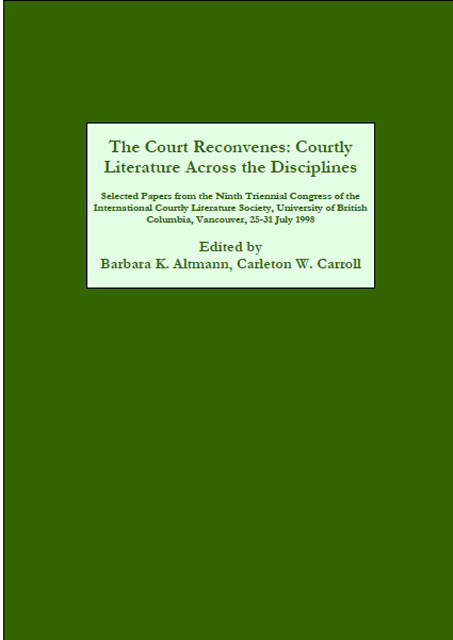 The Court Reconvenes
The Court Reconvenes Female enfances: At the Intersection of Romance and Epic
Published online by Cambridge University Press: 31 March 2023
Summary
The “falsely accused queen” story, an adjunct to numerous epic enfances, is more than a folktale borrowed into late medieval literary narrative. It is a reflection of social concerns about inheritance, family and marriage conditions similar to those seen in male enfances which it parallels, as well as being a dilatory plot technique which allows interlace in the form of a further character to be followed, and finally, it is a model specular episode for “expansion by variation” favored by both romance and epic. These tales are indeed “female enfances” because of their relationship to male enfances accounts and because of the integration of the female protagonist into an adult societal position.
Suard has described late chansons de geste (fourteenth- to fifteenth-century texts) by four essential characteristics (I change the order): 1. new types of characters; 2. new importance of folkloric and marvelous elements; 3. great length; and 4. strong didactic interest (449). These characteristics begin to appear in the thirteenth century. The increasingly frequent appearance of women among these new character types in the chanson de geste during the thirteenth century has been linked to the influence of courtly literature, though differences in women's roles between Arthurian and Carolingian plots are noticeable (cf. Vitz; Kay; Sinclair). The number of women protagonists increases with the number of young protagonists, of enfants.
Among the gestes which include female protagonists are those of Nanteuil and Charlemagne. Formally chansons de geste – that is, assonanced or rhymed laisses of decasyllables or alexandrines – they are frequently called chansons d’aventures or even romances. In the Charlemagne cycle, Berte aux grands pieds, Macario (Reine Sibille), Berta e Milone are dominated by female protagonists; in the geste of Nanteuil, Aye d’Avignon and Parise la duchesse are protagonists of the eponymous poems. Non-cyclical poems based on the same motif are also difficult to place by genre: Kibler calls La Belle Hélène de Constantinople a chanson de geste in form only (“Epic to Romance” 332); Wallensköld subtitles Florence de Rome a chanson d’aventure; and Kay calls the same poem “a limit-text of the genre” (“Chansons de geste” 158).
- Type
- Chapter
- Information
- The Court ReconvenesCourtly Literature across the Disciplines: Selected Papers from the Ninth Triennial Congress of the International Courtly Literature Society, University of British Columbia, Vancouver, 25-31 July 1998, pp. 141 - 150Publisher: Boydell & BrewerPrint publication year: 2002


